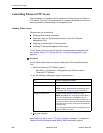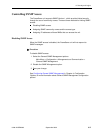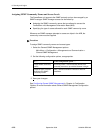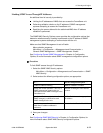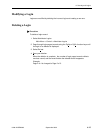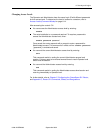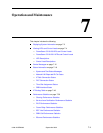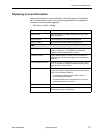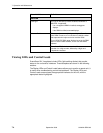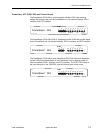
6. Security and Logins
6-14
September 2002 9128-A2-GB20-80
Controlling Router CLI Access
The FrameSaver SLV 9126-II Router can be managed from an NMS using SNMP,
or from the router’s command line interface (CLI). There are two methods to
access the command line interface:
Local access at the router through the COM port, or
Access via a Telnet session.
Telnet access defaults to Administrator level. If the current login is at the
Operator level, only Operator level access is available for the session. Telnet
access is always enabled.
The router accepts one CLI login session at a time and is configured at the factory
without a default login ID and password. To provide login security to the system,
configure a login ID and password.
When a local console connection is first established, a login prompt appears. If the
Device Name field has been configured via the Control menu
(Control Menu
→
System Information)
, the login prompt displays the device name.
For example, a device name of Largo is shown as:
Largo>
See
Creating a Login
on page 6-12 for security information for each Login ID.
Access Levels (Command Modes)
There is one login ID and several levels of privileges for the router’s CLI. Your user
account can be configured with one user name and different passwords for:
Operator
. The Operator has read-only access to display device information
with no modification permission and limited access to diagnostic functions.
With a device name of Largo, the prompt appears as Largo>.
Administrator
. The Administrator has several levels of access to the router’s
CLI. The # sign in the following prompts indicates Administrator access level.
Refer to Appendix C,
Router CLI Commands, Codes, and Designations
, for
access level details for each command line entry.
Display Prompt with Device Name of Largo Administrator Access Levels
Largo #> Standard (same as Operator)
Largo(config) # Configuration
Largo(config-if) # Configuration Interface
Largo(config-subif) # Configuration Sub-Interface
Largo(config-dhcp) # Configuration DHCP Pool



